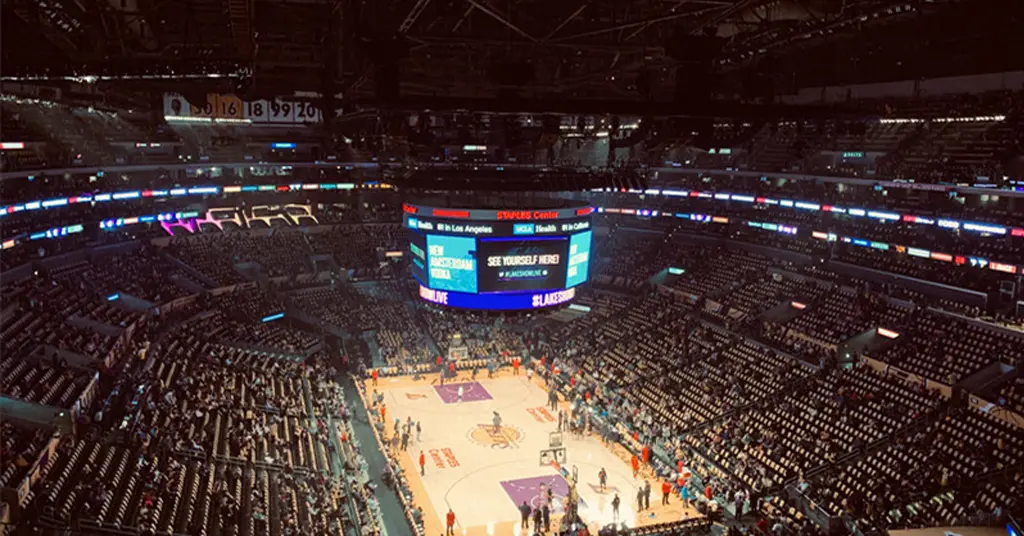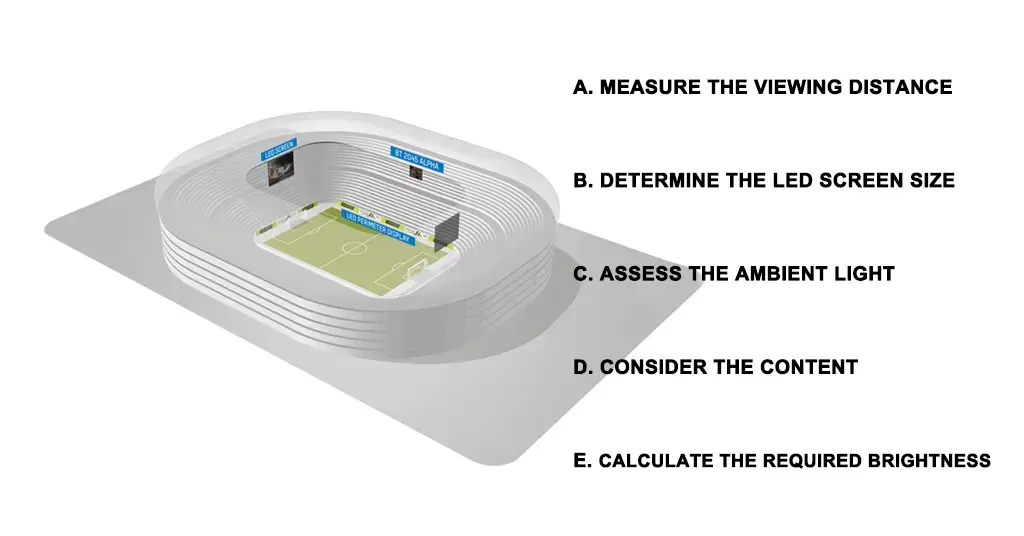How to Calculate the Brightness Required for the LED Screen of Stadium?
When it comes to stadium entertainment, an LED screen is a game-changer. It’s the focal point of fan interaction, showcasing live action, replays, and important information. But, how do you ensure that your LED screen is bright enough to be seen by everyone in the stadium? In this article, we’ll dive deep into the world of stadium LED screens and teach you how to calculate the brightness required for the LED screen of a stadium.
Table of Contents

Calculating the brightness required for the LED screen of a stadium involves a few key factors:
- Viewing Distance: The distance between the screen and the spectators determines the necessary brightness. The farther away the viewers are, the brighter the screen must be.
- LED Screen Size: Larger screens require more brightness to maintain the same level of visibility as smaller screens.
- Ambient Light: The amount of natural and artificial light in the stadium can affect the visibility of the LED screen. More ambient light requires a brighter screen to stand out.
- Screen Content: The type of content displayed on the screen can influence the required brightness. For example, sports games may require brighter screens than concerts or other events.
With these factors in mind, let’s explore the steps to calculate the brightness required for the LED screen of a stadium.
Step 1: Measure the Viewing Distance
To calculate the viewing distance, measure the distance from the LED screen to the farthest seat in the stadium. This will give you an idea of how far away spectators will be from the screen and how bright it needs to be.
Step 2: Determine the LED Screen Size
Next, determine the size of the LED screen. Larger screens need to be brighter to maintain the same level of visibility as smaller screens. Keep in mind that increasing the screen size may also increase the viewing distance.
Step 3: Assess the Ambient Light
Assess the ambient light in the stadium, taking into account both natural and artificial light. This can be done using a light meter or by consulting stadium lighting plans. The brighter the ambient light, the brighter the LED screen needs to be to stand out.
Step 4: Consider the Content
Consider the type of content that will be displayed on the screen. Sports games, for example, may require brighter screens than concerts or other events. Adjust the required brightness accordingly.
Step 5: Calculate the Required Brightness
Finally, use the gathered data to calculate the necessary brightness for your LED screen, typically measured in nits (cd/m2). There are online calculators and formulas available to help with this process, or you can consult with LED screen manufacturers for expert advice.
FAQ
The ideal brightness for an outdoor stadium LED screen depends on the specific conditions of the location, such as viewing distance, screen size, ambient light, and content type. However, as a general rule of thumb, outdoor LED screens should have a brightness of at least 5,000 nits to ensure visibility in daylight conditions.
Weather can impact the visibility of an LED screen, especially in rainy or foggy conditions. In these cases, a higher brightness level may be necessary to maintain visibility for spectators.
Yes, most modern LED screens come with a brightness control feature that allows you to adjust the brightness as needed. This can be especially helpful during events with shifting lighting conditions, such as transitioning from daytime to nighttime.
Calculating the brightness required for the LED screen of a stadium is a crucial step in ensuring an optimal viewing experience for spectators. By considering factors such as viewing distance, screen size, ambient light, and content type, you can create a tailored solution for your specific stadium environment.
If you are not very professional about the installation and commissioning of stadium LED screen, welcome to contact our senior technical engineers. We have more than 20 years of professional experience in the field of stadium audio visula, and can provide you with professional technical consultation and free quotation services for audio-visual system integration projects.
Others also read the following article
Want to know more about the Audio Visual Solutions?

